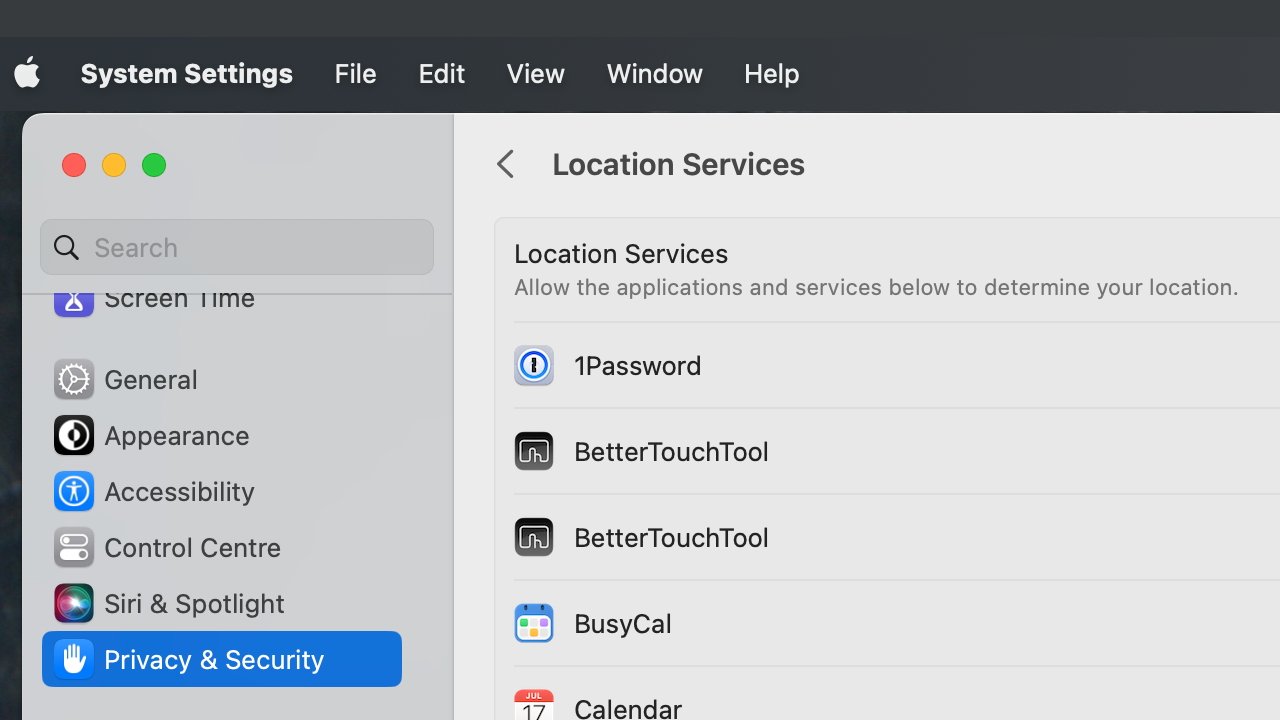Latest macOS Ventura update brings a location services bug
Apple's macOS Ventura 13.5 update is causing an unknown number of users to have lost all mention of apps in the Location Services section of Settings.

How Location Services is supposed to look in macOS Ventura
Location Services lets apps determine and use a user's location, or approximate location, to help them provide relevant services. Apps that a user allows to do this are listed in System Settings, Privacy & Security, Location Services.
However, a bug in the version of macOS Ventura released on July 24, 2023, has left some users seeing no apps listed in the section at all. They are also unable to see which apps are now or have recently been using their location data.
It's similar to an intermittent bug in the beta of macOS Sonoma, seen by AppleInsider, where apps in the Accessibility section of Privacy & Security are sometimes gone, too. In that case, problems are more expected because it macOS Sonoma is in beta testing, plus a restart of the Mac generally fixes it.
With this Location Services bug in macOS Ventura 13.5, it appears that restarting the Mac does not correct the issue.
The problem was first spotted by MacRumors. At present, Apple's support forums have perhaps two dozen reports of the issue, and no viable solution yet.
Apple has not commented on the issue.
Read on AppleInsider

Comments
I saw it mentioned about a week and a half ago over on The Eclectic Light Company - Last Week On My Mac: Ventura's Lost Location Services